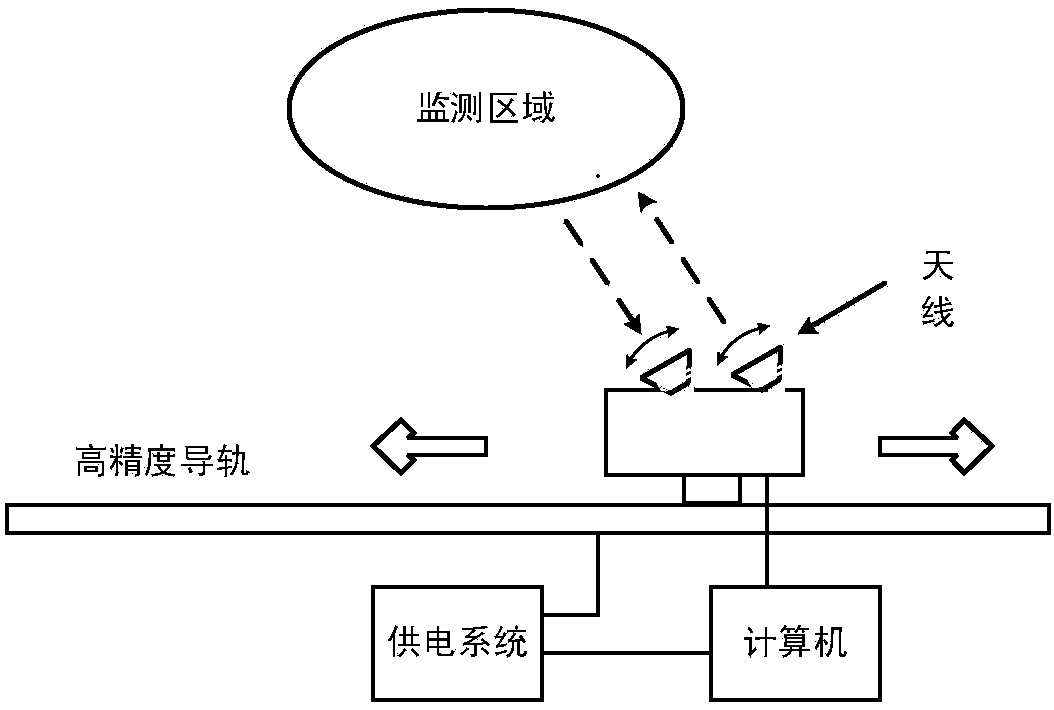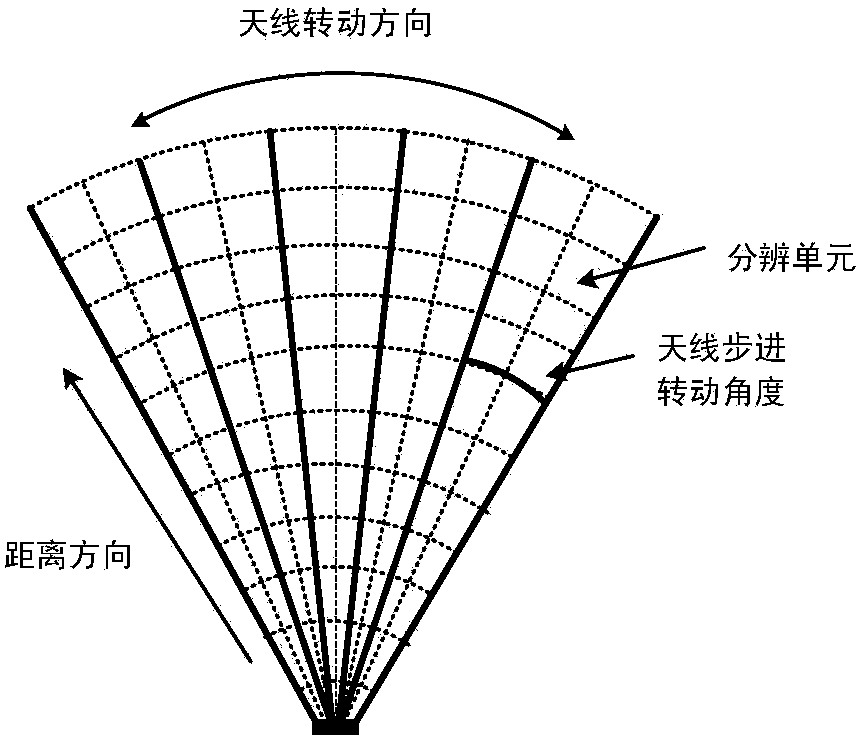GB-SAR deformation monitoring method based on triple stepping
A GB-SAR and deformation technology, applied in the direction of measuring device, radio wave measurement system, radio wave reflection/re-radiation, etc., can solve the problems of low azimuth resolution, high cost of pulse SAR, rough deformation map, etc., to achieve improved Distance resolution and azimuth resolution, the effect of increasing the monitoring range
- Summary
- Abstract
- Description
- Claims
- Application Information
AI Technical Summary
Problems solved by technology
Method used
Image
Examples
Embodiment Construction
[0021] How Radar Works and Design Constraints:
[0022] The radar is a step frequency continuous wave system, using independent transmitting antenna and receiving antenna, the antenna can be rotated in steps along the azimuth direction, and the whole radar is installed on a linear guide rail with a length of L, such as figure 1 shown. The monitoring area is centered on the radar with a radius of R max (Maximum operating range of the radar), the radar divides the monitoring area into several resolution units along the range and azimuth directions. The radar moves step by step according to the "stop-go-stop" mode on the guide rail, each time it moves a distance of ΔL, and then stops to send and receive a frame of SFCW signal, and the number of step frequency is N, such as image 3 shown. The carrier frequency of the first pulse of each frame signal is f c , the frequency step value is Δ f , the carrier frequency of the sub-monopulse is f n = f c +(n-1)Δf. The radar retur...
PUM
 Login to View More
Login to View More Abstract
Description
Claims
Application Information
 Login to View More
Login to View More - R&D
- Intellectual Property
- Life Sciences
- Materials
- Tech Scout
- Unparalleled Data Quality
- Higher Quality Content
- 60% Fewer Hallucinations
Browse by: Latest US Patents, China's latest patents, Technical Efficacy Thesaurus, Application Domain, Technology Topic, Popular Technical Reports.
© 2025 PatSnap. All rights reserved.Legal|Privacy policy|Modern Slavery Act Transparency Statement|Sitemap|About US| Contact US: help@patsnap.com



